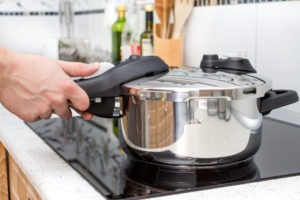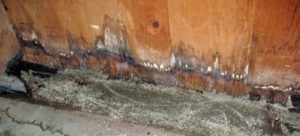Tips to Avoid Common Pressure Cooker Accidents

Pressure cookers are popular cooking appliances that utilize heat and pressure to cook foods quickly and give them a distinct flavor and profile. That being said, heat and pressure can also be a very dangerous combination, especially if a cooker is faulty or defective. Defects can happen at multiple points along the way, including during design, production, transport, or storage. Explosions are the most common accident, with burns, cuts, and scalds being the main injuries. Let’s take a look at some of the most cooker defects as well as the steps you can take to reduce the risk of accidents.
Common Problems for Pressure Cookers
- Faulty gaskets: Gaskets help seal the space between two surfaces, and if the gaskets on a cooker are defective, it can cause the pot to open or leak and potentially cause an accident.
- Non-functioning lid seals: As you can imagine, the lids of cookers need to be sealed while under pressure, or else the contents can explode or shoot scalding steam.
- Defective ventilation systems: Improper ventilation can cause a cooker to overheat and potentially explode.
Pressure Cooker Safety Tips
- Inspect the seals and rubber parts of the cooker before use: Pressure cookers need to be sealed properly in order to function safely. Be sure to check all of the seals to make sure they are not cracked, brittle, or missing altogether. Some manufacturers offer replacement seals and gaskets, and they are generally pretty simple to install.
- Never overfill your cooker: Always make sure that you adhere to the maximum fill line for your specific cooker, and it’s a good idea to underfill just a little just to be safe. Foods that grow when cooked, such as pasta or rice, should be filled halfway at most.
- Be sure to always include liquid in your recipes: Pressure cookers utilize pressurized steam to cook and soften foods, so always make sure to include one-half to a full cup of liquid so that the pot doesn’t overheat.
- Be cognizant of the food you’re cooking and its properties: Some foods will produce froth when cooked, including pasta, oats, peas, applesauce, and certain fruits. This froth can clog vents and steam ports, which is a big safety concern. If you are following a recipe, be mindful of the size of the cooker, and if the recipe is based on a different size cooker try to accommodate for that difference. Never try to fry food in a pressure cooker unless the unit is designed to do so.
- Always release pressure safely after use: There are three conventional methods of releasing steam and pressure–these include removing the power source and letting the cooker sit, pouring cold water over the lid of the cooker, or using the steam release valve or mechanism for your specific cooker. Never deviate from these methods and be mindful of the fact that some pressure may still be in the cooker even after you’ve attempted to fully release it.
- Properly clean and store your cooker: Once you’re done using your pressure cooker, always disassemble, clean, and store it properly until your next use. This will not only lengthen the life of your cooker, but it will also lower the chance of failure moving forward.
Questions About Pressure Cooker Claims? Contact Van Law Firm
For a free legal consultation, call (725) 900-9000
If you or a loved one has suffered injuries due to a defective or faulty pressure cooker, simply contact the Van Law Firm office nearest you as soon as possible. Our trusted team of pressure cooker injury attorneys are ready to review your claim and formulate the best course of action to recover maximum compensation. Don’t wait– call now to see what Van Law Firm can do for you.
No obligation consultations are always free.
Let Us Help You! Call Now: (725) 900-9000


